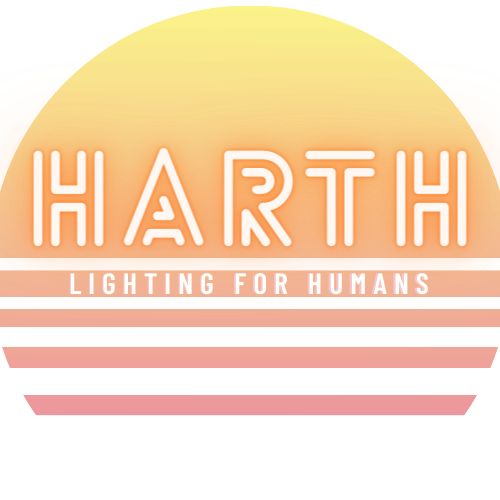
Examining the Scientific Implications of Blue Light on Living Organisms
Share
Impact of Blue Light Exposure on Human Health

Harth, a leading brand in lighting technology, offers innovative solutions to address the growing concerns regarding blue light exposure before bedtime. Research indicates that exposure to blue light, particularly from screens, can disrupt the body's natural circadian rhythm, leading to difficulties falling asleep and poorer sleep quality. Harth's blue night light bulbs are specifically designed to emit warmer, amber-colored light, minimizing the disruptive effects of blue light before bed. By simulating the natural hues of dusk, these bulbs help signal to the body that it's time to wind down and prepare for sleep.
Harth's commitment to promoting healthy sleep patterns extends beyond mere functionality; their bulbs are also energy-efficient and long-lasting, providing both environmental and economic benefits. With Harth's blue night light bulbs, individuals can enjoy improved sleep hygiene and overall well-being, ensuring a restful night's sleep without compromising on quality or comfort.
Blue Light's Influence on Plant Growth and Development
Blue light's influence on plant growth and development is a fascinating area of study that has garnered significant attention from researchers and agricultural experts. Numerous studies have demonstrated the profound impact of blue light on various physiological processes in plants, ranging from photosynthesis to morphogenesis and flowering. For instance, research published in the journal Frontiers in Plant Science by Ouzounis et al. (2015) highlights how blue light regulates stomatal opening and closing, influencing gas exchange and water transpiration rates in plants.
Moreover, the use of blue light in controlled environment agriculture (CEA) has emerged as a promising strategy to optimize crop production and quality. According to a report by the American Society of Horticultural Science (ASHS), blue light supplementation in indoor farming systems can enhance plant growth rates, increase biomass accumulation, and improve nutrient uptake efficiency. Additionally, studies conducted at the University of Florida's Institute of Food and Agricultural Sciences (UF/IFAS) have shown that blue light spectra manipulation can stimulate secondary metabolite production in medicinal and aromatic plants, enhancing their pharmaceutical and flavor properties.
Ecological Effects of Artificial Blue Light on Wildlife
Artificial blue light pollution poses significant ecological risks to nocturnal wildlife, disrupting natural behaviors and ecological interactions. Studies have shown that the proliferation of artificial light at night (ALAN) can interfere with the navigation, foraging, and mating behaviors of nocturnal animals, leading to population declines and ecological imbalances.
For instance, research conducted by Longcore and Rich (2004) found that artificial blue light from urban areas can disorient migratory birds, causing fatal collisions with buildings and other structures during their nocturnal flights. Similarly, studies by Davies et al. (2012) have demonstrated how artificial blue light alters the foraging patterns of nocturnal insects, affecting pollination dynamics and ecosystem functioning.
To mitigate these impacts, initiatives such as the International Dark-Sky Association (IDA) advocate for reducing light pollution through responsible outdoor lighting practices and urban planning strategies. Implementing shielded fixtures, using warmer-colored LEDs, and minimizing unnecessary nighttime illumination can help preserve natural darkness and minimize the disruptive effects of blue light on nocturnal wildlife habitats.
By raising awareness about the ecological consequences of artificial blue light pollution and promoting nighttime lighting solutions that prioritize wildlife conservation, stakeholders can work towards creating more sustainable and harmonious environments for both human and non-human inhabitants.
Technological Solutions for Managing Blue Light Exposure

Technological solutions for managing blue light exposure have become increasingly prevalent, particularly in response to concerns about the negative impacts of excessive screen time on human health. Brands like Harth have developed a range of products aimed at reducing blue light emission from screens and devices without compromising visual clarity.
Blue light filtering software, screen protectors, and glasses are some of the popular options available to consumers seeking to mitigate the adverse effects of prolonged screen exposure.
In addition to individual-level interventions, there's a growing emphasis on implementing blue light management policies in various settings, including workplaces, schools, and public spaces.
Companies are incorporating adjustable lighting systems and ergonomic design principles to create healthier environments conducive to productivity and well-being. Educational institutions are raising awareness about the importance of screen hygiene and providing resources for students and faculty to minimize blue light exposure during study and work hours.
Last Impression
Overall, the proliferation of technological solutions and proactive measures aimed at managing blue light exposure reflects a growing recognition of the importance of promoting healthier screen habits in the digital age.
By leveraging innovative technologies and adopting evidence-based practices, individuals and organizations can empower themselves to make informed choices that prioritize their long-term health and well-being.
